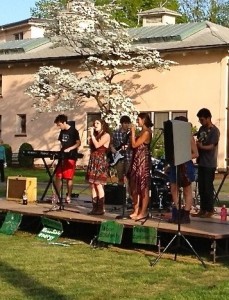Early May usually brings an unusually large number of press reports about higher education. Many high school seniors have just made their decisions about where they will be going to college, and those preparing to graduate from universities across the country are confronting transitions into an increasingly unwelcoming economy. Recently, there have been dozens of stories about whether those college years were worth the investment of time and money. Are American colleges and universities doing enough to prepare their graduates for the competitive world beyond the campus?
In this first week of May there were two stories that caught my eye. The first was on NPR, a media outlet usually pretty friendly to higher education. I know that many of its listeners, and almost all of its reporters, have benefited from broad educational experiences. The reporter on a recent story about liberal arts colleges, though, was wondering if we can still afford a wide-ranging, liberal education in our hyper-competitive world. Liberal arts schools, she said, “have long had a rap of being a kind of luxury, where learning is for learning’s sake, and not because understanding Aristotle will come in handy on the job one day. But economic pressures and changes in the world of higher education have now put them more on the defensive than ever.”
The reporter on the story is Tovia Smith, herself a graduate of Tufts University, a fine liberal arts school. Smith has covered or produced stories on an amazing range of topics, from race relations to orphanages, from Clinton’s impeachment to Massachusetts prisons, “as well as regular features on cooking and movies.” I took this list from the NPR website, which also tells us that Smith taught journalism in Africa. Has learning for learning’s sake been a luxury for her, I wondered, or is it an integral part of her career and her life? She sure seems to have benefited from her Tufts education.
The second story that drew my attention was the announcement that Harvard and MIT were joining forces to offer “free online, college-level courses under a joint superbrand known as edX.” This is a great opening of access to the wealth of learning these universities possess. Both schools are among the most selective in the United States, and this venture means “Anyone with an Internet connection anywhere in the world can have access,’’ as Harvard president Drew Faust put it. The Cambridge powerhouses are inviting other schools to add their course materials to the platform they are developing, which will also allow researchers to study how students best learn online.
Where does this leave residential liberal arts schools? Nobody knows for sure how the availability of online courses will affect students’ interest in physically coming to a college to learn in a campus setting. Interest in attending MIT and Stanford has only grown as these universities have made course materials available online, and there is no sign that this new edX venture will reduce the desire to study in Cambridge, Massachusetts. That’s why the analogy between higher education and the newspaper business, drawn in this morning’s New York Times by the liberally educated David Brooks, doesn’t work. Nobody rushes out to buy the Times because they experienced it online.
Why is there still such a strong desire to be part of a diverse campus community when one can access content (often for free) in one’s own way at one’s own pace? It’s because a campus community still functions as a powerful catalyst for lifelong learning – and the ability to keep learning over a lifetime has never been so essential as it is today. Liberal arts education no longer draws on the cultivated homogeneity of a country club (or of the boardroom). Today selective schools create communities in which people learn from their differences while forming new modes of commonality. We don’t do this to be politically correct. We do it to prepare students to become lifelong learners who can navigate in and contribute to a heterogeneous world after graduation.
Our campuses should maximize each undergraduate’s ability to go beyond his or her comfort zone to learn from the most unexpected sources. By contrast, in the carefully curated online communities we create, we can reduce chances of surprise encounters, we can distance ourselves from sources with which we are unfamiliar. Our social networks are virtual, gated communities. We just filter out (or “unfriend”) the points of view we don’t want to hear. Our campuses, on the other hand, should be places where diversity leads to learning as our students come to see differences among people as a deep resource for solving problems and seeking opportunities. Online education can complement this educational environment very well. But it does not replace the need for it.
It’s early May, and as we prepare to welcome the class of 2016 and congratulate the grads of 2012, we should remember that their broadly-based, reflexive education is much more than information transfer. That kind of exchange can be done very well online. Our education, our immersion in communities of learning, is an initiation into a lifetime of learning, of solving problems, of creating opportunities, of experiencing the pleasures of the arts — and of participating in the public sphere.
Lifelong learning isn’t a luxury, although it does require investment. The investment enables our graduates to engage more fully with the world around them and exercise their responsibilities as citizens, to become shapers of the economy and culture of the future rather than be just spectators – or victims.






